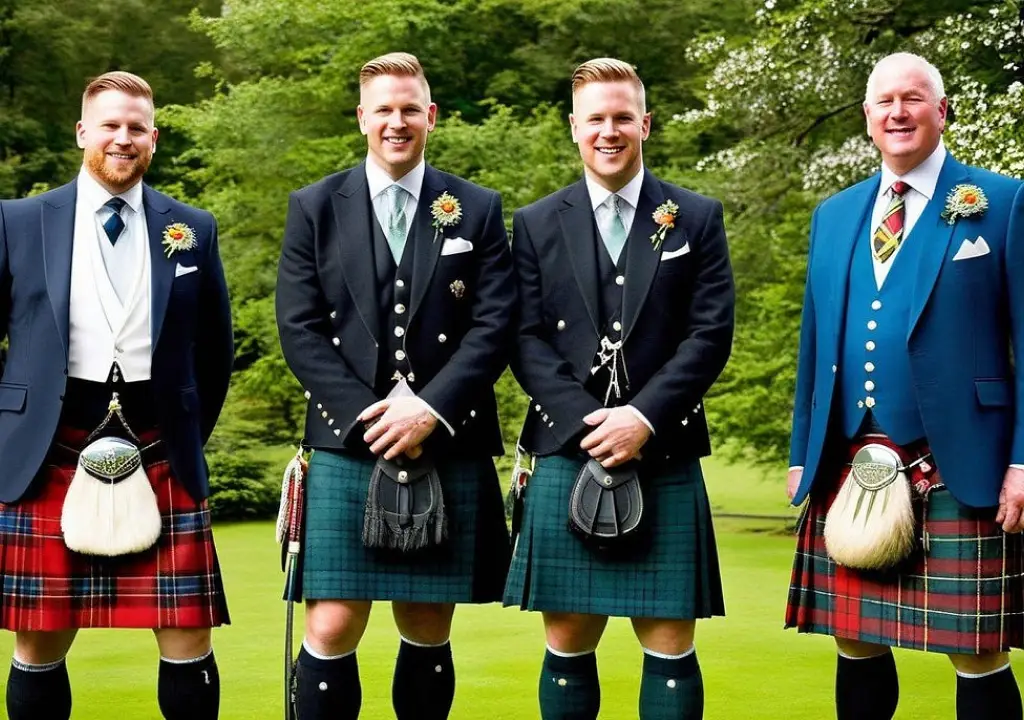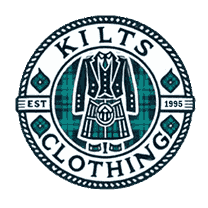Are Kilts Scottish or Irish? Unraveling the Historical and Cultural Origins

Kilts are iconic garments closely associated with Scottish heritage and seen as national pride symbols. Their unique design and tartan patterns make them instantly recognizable and celebrated in Scottish culture.
However, sometimes, more clarity is needed about whether kilts are exclusively Scottish or if they also have roots in Irish culture. This confusion arises because Scotland and Ireland have rich histories and traditions related to similar garments.
In this blog, we aim to clarify the origins of kilts by examining their historical and cultural backgrounds. We will explore how kilts became an integral part of Scottish identity and how they also fit into Irish heritage. By looking at both Scottish and Irish perspectives, we hope to provide a comprehensive understanding of this distinctive piece of attire and its significance in both cultures.
The History of Kilts
A kilt is a knee-length skirt-like garment with pleats at the back, originating from the Scottish Highlands.
Traditional Kilts are made from woollen cloth in tartan patterns, kilts are known for their distinctive and practical design. They include a waistband that fastens with buckles and is worn with various accessories, including sporrans, belts, and pipes.
The earliest reference to a garment similar to the kilt can be traced back to the 16th century, although its origins likely date even earlier. Initially, Highlanders wore a "great kilt," a full-length cloak wrapped around the body.
Over time, the féileadh mòr evolved into the modern kilt, which became popular during the 18th century. This evolution marked a shift towards a more practical and versatile garment that suited the needs of Highlanders.
Scottish Kilts
Scottish kilts have a rich history closely tied to Scotland's cultural and social evolution.
The transition from the féileadh mòr to the modern kilt marked significant changes in Highland dress. The kilt became a symbol of Scottish identity, particularly after the Jacobite uprisings of the 18th century, when the British government banned Highland dress to suppress Scottish culture.
The ban on Highland dress was lifted in 1782, allowing the kilt to once again become an important symbol in Scottish culture. Since then, the kilt has remained a cherished emblem of Scottish heritage and a source of pride, with many offering traditional kilts for sale to preserve this iconic attire.
Traditional Scottish Kilts
Traditional Scottish kilts are typically made from woollen tartan fabric, characterized by distinctive checkered patterns in various colours.
Tartan patterns are associated with specific Scottish clans, each with its unique design and colour scheme. The kilt's design usually includes a pleated back, a flat front, and a waistband with buckles for adjustment. It is often worn with a sporran (a small pouch) and can be accessorized with various items such as a sgian-dubh (a small knife) and a kilt pin.
Scottish kilts are also worn with accessories that reflect traditional Highland dress, including hose (knee-length socks) and brogues (shoes). The complete outfit represents a fusion of functionality and cultural significance.
Cultural Significance
In Scotland, kilts hold deep cultural significance. They are worn at ceremonial events like weddings and graduations and national celebrations like Burns Night.
The kilt is also a key element of the Scottish Highland Games, where competitors and spectators wear it. The garment embodies Scottish heritage and pride, showcasing the wearer's connection to their clan and history.
Kilts serve as a symbol of Scottish identity at international events. Scots living abroad wear them to celebrate their heritage and maintain a link to their roots.
Irish Kilts
The use of kilts or similar garments in Ireland dates back to ancient times. Traditional Irish dress included the "léine," a tunic worn by both men and women and the "brat," a cloak-like garment.
"kilt" is less commonly linked to Irish attire than Scottish kilts. However, the Irish adapted the kilt over time, incorporating it into their cultural practices.
Scottish kilts influenced Irish designs, but the Irish added their unique elements. This adaptation reflects Ireland's distinct historical and cultural evolution.
The blending of Scottish and Irish styles resulted in similar kilts and unique features. It shows how both cultures have shaped the kilt's history and significance.
Traditional Irish Kilts
The use of kilts or similar garments in Ireland dates back to ancient times. Traditional Irish dress included the "léine," a tunic worn by both men and women and the "brat," a cloak-like garment.
Although "kilt" is less commonly linked to Irish attire, the Irish adopted and adapted this garment over time. This adaptation incorporated unique elements of Irish culture.
Irish kilts often feature designs and patterns distinct from those of their Scottish counterparts. While they share similarities with Scottish kilts, including pleats and waistbands, Irish kilts may use different tartans or patterns.
Typically worn in formal settings such as Irish dancing competitions, parades, and cultural events, Irish kilts incorporate elements of Irish heritage. These may include Celtic knotwork or specific colour schemes representing Irish counties or regions.
These unique details make the Irish kilt a distinct expression of Irish cultural identity, showcasing how the garment has evolved to reflect Irish traditions and regional pride.
Cultural Significance
In Ireland, kilts are worn during special occasions, particularly those celebrating Irish culture and heritage.
They are commonly seen during St. Patrick's Day parades, Irish music festivals, and traditional dance performances. The Irish kilt symbolizes national pride and a connection to Ireland's rich history and traditions.
The kilt's role in Irish culture is also evident in its use during celebrations of Irish folk traditions and historical reenactments, showcasing its versatility and significance.
Key Differences and Similarities
While both Scottish and Irish kilts share a similar basic design, there are notable differences in their construction and fabric.
Scottish kilts are typically made from woollen tartan fabric, known for their distinctive checkered patterns. On the other hand, Irish kilts may feature different patterns or colours, reflecting regional or personal preferences.
Additionally, Scottish kilts often have more elaborate accessories, such as sporrans and kilt pins, than their Irish counterparts. These accessories enhance the kilt's functionality and aesthetic appeal.
Cultural Context
The cultural contexts of Scottish and Irish kilts also differ.
In Scotland, kilts are deeply embedded in national identity and heritage, strongly associated with clan history and Highland traditions. In Ireland, kilts are part of a broader cultural attire, often used to celebrate Irish heritage in specific contexts rather than as a daily garment.
The kilt's significance in Scotland is tied to its role in preserving Highland traditions and promoting Scottish culture, while in Ireland, it represents a blend of traditional and contemporary cultural expressions.
Modern Interpretations
Both Scottish and Irish kilts have undergone modern adaptations.
Today, kilts are worn in various settings, including formal events, cultural festivals, and casual settings. Modern kilts may feature updated designs, fabrics, and accessories, reflecting contemporary fashion trends while honouring traditional elements.
This evolution of the kilt reflects its ongoing relevance and adaptability in both Scottish and Irish cultures, allowing it to remain a vibrant part of cultural celebrations and everyday fashion.
Common Misconceptions
One common misconception is that kilts are exclusively Scottish and have no place in Irish culture.
While kilts are strongly associated with Scotland, their presence in Irish culture is also significant. Another misconception is that all tartans are Scottish; however, traditional tartan kilt have been embraced and adapted by both Scottish and Irish communities.
Clarifying these misconceptions helps to appreciate the kilt's role in both cultures and understand its varied expressions across different traditions.
Conclusion
Kilts have a rich history spanning Scottish and Irish cultures.
While they are most commonly associated with Scotland, Irish kilts also hold cultural significance and reflect Ireland's heritage. Understanding the origins and variations of kilts in both cultures allows us to appreciate the garment's role in celebrating and preserving cultural traditions.
Kilts are more than just a piece of clothing; they are symbols of cultural pride and historical heritage. Whether worn in Scotland or Ireland, kilts represent a deep connection to the past and a celebration of identity. By exploring kilts' historical and cultural contexts, we gain a greater appreciation for their significance and the ways they continue to influence contemporary fashion and cultural expression.

